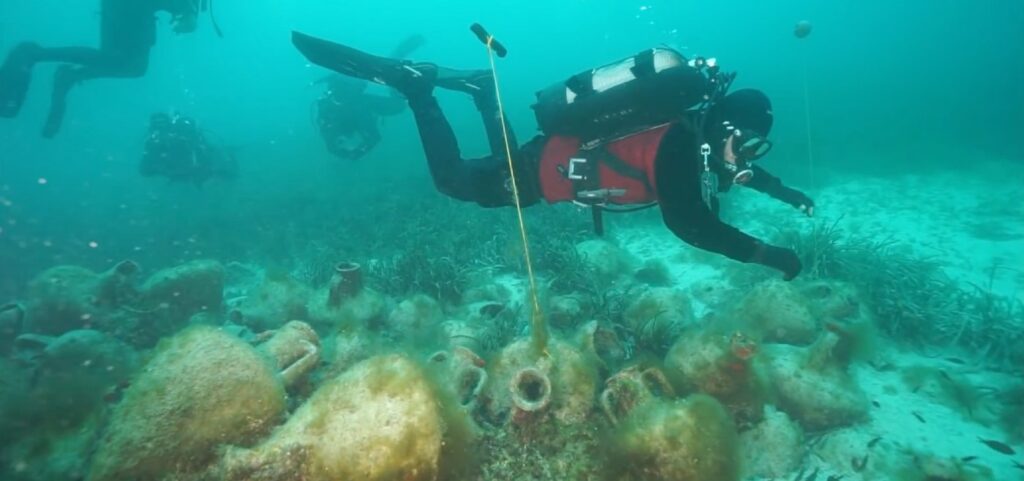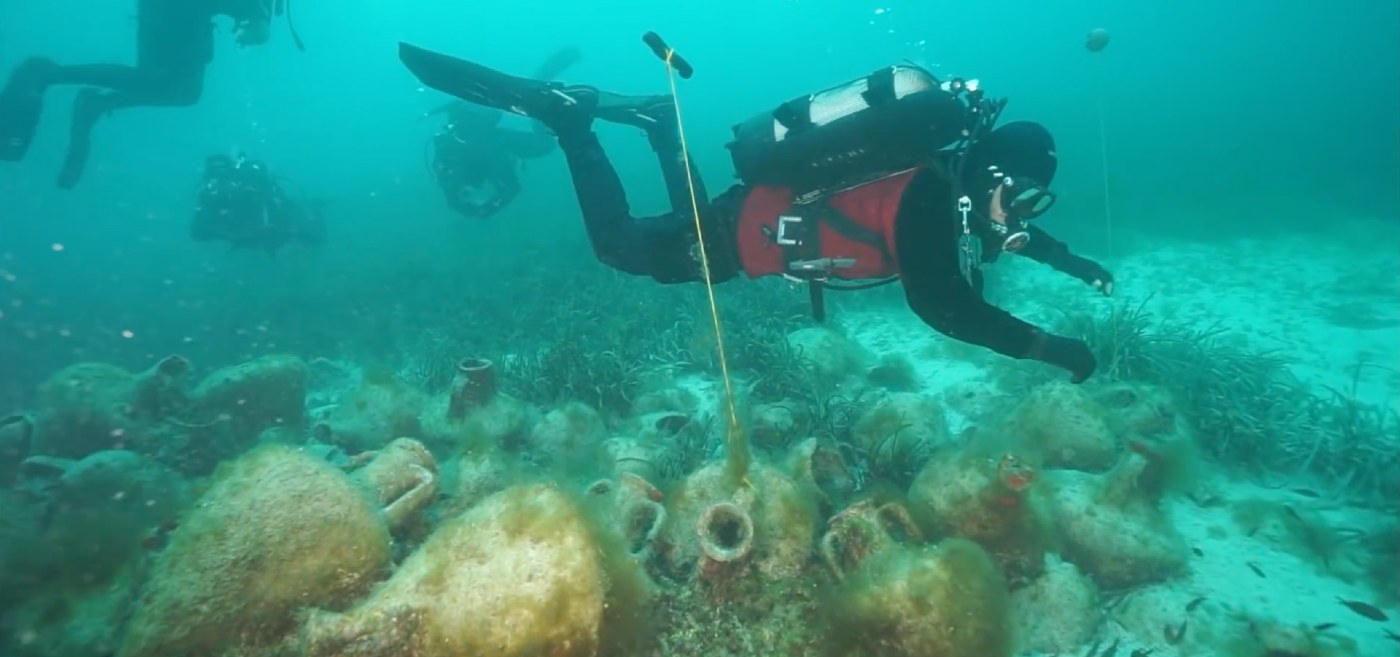Greece’s first underwater museum allows visitors to dive down in time to the era of the Peloponnesian War while viewing ancient shipwrecks and pristine coral gardens.

Diving down to depths of 80 feet, guides are able to show visitors the 90-foot-long Peristera shipwreck sitting where it sank 2,400 years ago while carrying a cargo of wine and black-glazed clay tableware.
The Peristera shipwreck museum, named for a neighboring uninhabited islet along whose coast it was discovered, was opened to the public during a pilot period which just ended at the closing of October. In total more than 300 people arrived, including 250 visitor-divers.
The optimistic opening, COVID-19 permitting, will be June 2021. Experienced divers can go with a guide, while non-divers can take a class at the nearby accredited diving centers.
Located in the National Marine Park of Alonissos and Northern Sporades, the first Marine Protected Area established in Greece and the largest in Europe, divers will also have the chance to come face to face with over 300 fish species, Mediterranean monk seals, and beautiful coral beds.
For those not intending to dive, five underwater cameras can show visitors a glimpse of what’s underneath the waves, including one which runs on a 24-hour live stream.
A casualty of war
The shipwreck was likely Athenian and was believed to have sank during the Peloponnesian War, a period after the golden era of Greek city-state civilization when Sparta and Athens fought each other down to the nub.
READ: The World’s First Happiness Museum Opened in Copenhagen, and It’s Bound to Put a Smile on Your Face
It was discovered in 1985 by a local fisherman, but wasn’t explored by archaeologist Elpida Hatzidaki and his colleagues until seven years later.
According to National Geographic, the ship was bigger than any merchant vessel from the period (4th to 5th century BCE), and its dimensions, 39-82 feet, are normally assumed to have been achieved during Roman times.
Its archaeologically significant cargo of 4,000 clay amphora—or two-handed clay wine jugs—have remained intact after all these years, and diver-visitors can literally see how they were stacked in the boat.
Archaeologists speaking with Nat Geo said that only some burned timbers remained from the hull, though the shape of the of the ship, much like a fossil, can be clearly seen based on the natural features that grew on its skeleton.
CHECK OUT: Museum of Natural History Unveils New Hall of Gems After Years Of Renovation—And It Looks Incredible
Even though little physical remains of the shipwreck can be found, local dive guide Kostas Efstathiou told the magazine there has been interest from “all over the world” and that the panoramic view of the 4,000 amphorae surrounded by the outline of where the ship sat for so many centuries, with coral-covered seabed around it, is something “awe-inspiring.”
(WATCH the YouTube video of divers exploring the shipwreck below.)
SHARE the News From the Aegean With Pals on Social Media…




















